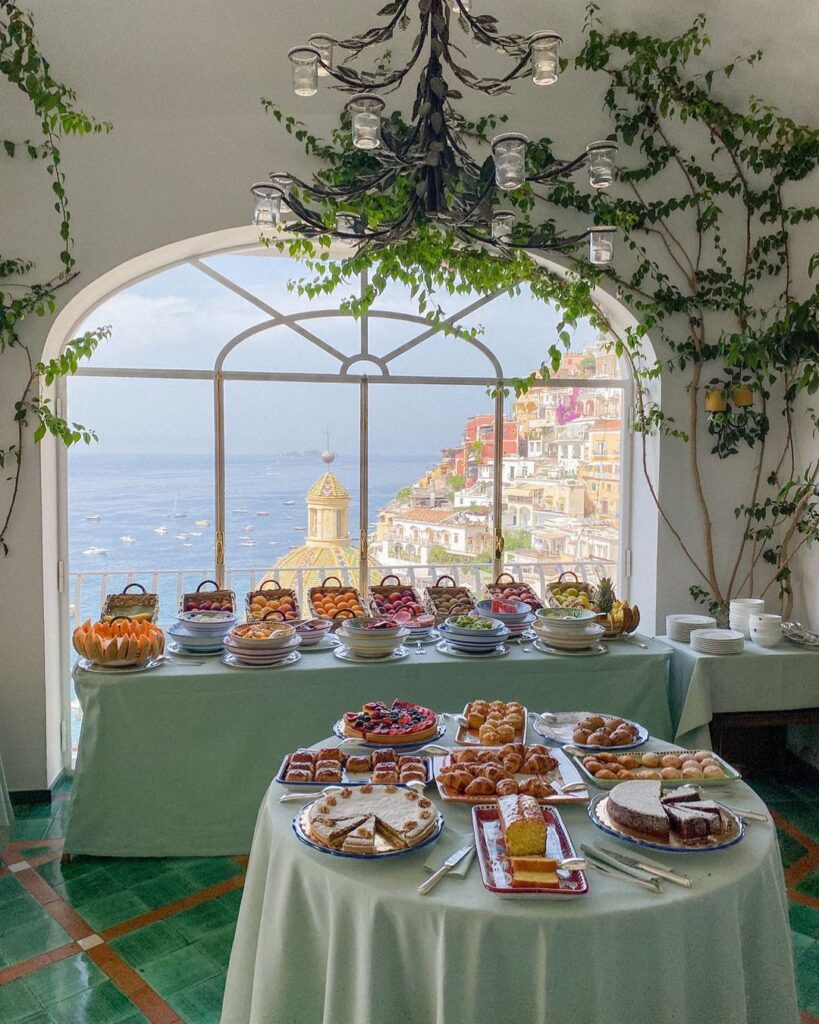
The Amalfi Coast—with its idyllic landscapes of cobalt-blue sea, dramatic crags, tranquil beaches, lush greenery and cliff-hanging pastel-coloured towns and villages—is one of Italy’s most seductive destinations. The majestic beauty of the Amalfi coast is enticing and it has long been a favourite holiday destination for both Italians and foreigners alike. This August, I spent a week sailing along the dramatic coastline with my friends and family. Just to tell you a little secret: the beauty of the Amalfi coast is better appreciated from the sea!
The Amalfi coast runs around 50km from Sorrento to Salerno. The picturesque village of Amalfi – it could once rival Pisa and Venice in wealth and power due to its maritime connections – gave the area its name. Positano is perhaps the most popular town on the coast, especially with fashionable jet-setters.
In 1997, the Amalfi Coast was designated a UNESCO World Heritage Site, and the region boasts a blend of natural and cultural wonders. Its natural beauty is outstanding, and here you will find some of the most important archaeological sites in the world.
The remarkably preserved Ancient Greek temples at Paestum, an archaeological site a short train ride away from Salerno.
The Amalfi Coast is one of Italy’s most glamorous destinations and is home to some of the country’s finest hotels and restaurants. The picture above is possibly the best lobster linguine I have ever tasted (at Il Geranio restaurant on Capri Island)!
The Amalfi Coast is one of the best spots for hiking, with well-marked trails providing the chance to escape the hustle and bustle of coastal crowds. We climbed many steps along the precipitous cliffs, but in return, we were rewarded with breathtaking views of the precipitous cliffs and the deep blue waters below. The Sentiero degli Dei (the Path of the Gods), linking the tiny hilltop town of Agerola with Nocelle (a tiny hamlet in the vicinity of Positano), is perhaps the most well-known trail. Its name is an indication of the spectacular scenery it enrolees.

Positano exudes irresistible charm with its romance and luxury. Cascading down the mountain all the way to the water, this beautiful small town with its colourful buildings has long been a favourite Italian seaside spot with many writers and artists. Positano has humble origins as a fishing village; however nowadays its perhaps the most popular town on the Amalfi coast with an abundance of fine dining restaurants, luxury hotels and high-end boutiques. You can read John Steinbeck’s reflections on Positano for Harper’s Bazaar.
The pretty little Amalfi, nestled at the mouth of a deep ravine and surrounded by dramatic cliffs, might be my favourite town on the coast. In the medieval times, Amalfi was a maritime superpower with a population of more than 70,000. Nowadays, it is the main town on the coast and a bustling tourist centre.
Amalfi is one of the first places where paper as we know it today was made in Europe. One of the highlights in Amalfi is the little quaint museum featuring exhibits on the history and production of paper in Amalfi.
Perched high in the hills above Amalfi, Ravello is small resort town and home to iconic cliffside gardens. Villa Rufolo offers far-reaching views from its terraced gardens, and hosts indoor and outdoor concerts during the popular summertime Ravello Festival.
Capri Island is a favourite day-trip destination for the jet-setting VIPs and celebrities. Just like the Amalfi coast, the island is known for its breath-taking scenery of precipitous cliffs, mesmerising grottoes and rich greenery. Its serene beauty made Capri a favourite with Roman emperors in the early years of the Roman empire, who turned the island into their private resort. Nowadays, Capri Town and Anacapri are very busy thriving tourist centres, but step a little outside and you will be charmed by Capri’s practically unspoilt natural beauty.Its all about the lemons on the Amalfi coast…
Lemons from the Amalfi coast are world-famous and their production is in abundance here. These lemons are prized for their low acidity and delicate flavour, and are used for production of limoncello liquor and lemon honey amongst other things. These large lemons are so sweet you can eat them whole! The lemons were first brought to the Amalfi Coast centuries ago on trade routes from the Middle East. They were treasured by sailors for warding off scurvy and other ailments at sea.
On our last day, we stopped for half a day in Pompeii. The sprawling ruins of Pompeii – Europe’s most compelling archaeological site – allow you to step back in time almost 2000 years.
The site will surely surpass all your expectations: when the town was buried under a layer of papilla (burning fragments of pumice stone), it resulted in a remarkably well-preserved and fascinating piece of ancient life.
A little photo diary to finish the post…


The restaurant at Le Sirenuse, Positano’s most distinguished hotel. The views from the hotel are spectacular .




